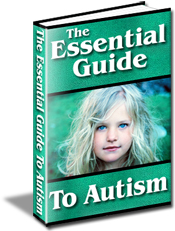How We Talk to Children with Autism
Click Here To Know The Simple Methods To Effectively Spot The 31 Signs of Autism
You have permission to publish this article electronically or in print, free of charge, as long as the bylines are included. A courtesy copy of your publication would be appreciated.
I'd like to discuss how we talk to children with autism. One of the things that strikes me is the wide range of what is considered acceptable. I'm not talking about teaching methods. Specifically, I'm talking about the tone and volume in which we speak to these children. I know that they're often difficult to reach and may require multiple attempts to get them to attend or to understand what is being said to them. I also understand that this can be frustrating and confusing at times, but it's everyone's job to stay calm and talk to them in a reasonable manner.
There are many teachers and therapists in special education that would never speak harshly to any child. However, I've heard many speak to children with autism in ways that no regular education program would tolerate, and it seems that this practice is still widespread. My theory is that this habit of loud, cruel voices has been accepted for so long that no one questions it. It's left over from the days when persons with autism were yelled at, slapped and cattle-prodded to get them to comply.
Everyone knows that being spoken to harshly and punitively can break a person's heart, spirit and self-esteem over time. Our children are no different. They need to feel loved, accepted and cared for. Cruel and abusive tones alone can be harmful, even without negative words attached.
My suggestion is that we ask our teachers to speak to our children with kindness and respect. At times when firmness is called for, everyone can still speak kindly while staying firm. It's all in the choice of tone and language.
We want our children to grow into their full potential. It can't happen if they're feeling anxious or depressed or if their self-esteem has been damaged. We need to lay the foundation first- love, trust, respect, acceptance and kindness. Then we can build instruction over that foundation, taking care not to displace it. If you think about it, it's all relatively common sense. We all learn and become our best in this kind of supportive and accepting atmosphere. Our children do too.
Sandra Sinclair, www.autismvoice.com
Sandra Sinclair is a parent of a child with PDD-NOS. Sandra assists parents of children with autism spectrum disorders. She is also author of Newly Diagnosed Autism Spectrum - A free mini-course with 7 clear steps you can take to help your child with Aspergers, Autism, PDD-NOS, and other autism spectrum disorders. http://www.autismvoice.com/blog/7StepstoHelpChildrenwithAutism
Labels: autism_childhood_rating_scale, autism_com, autism_diagnosis, autism_diet_free_gluten, autism_fact, autism_geodon, autism_mmr, autism_pdd, autism_poem, autism_services

